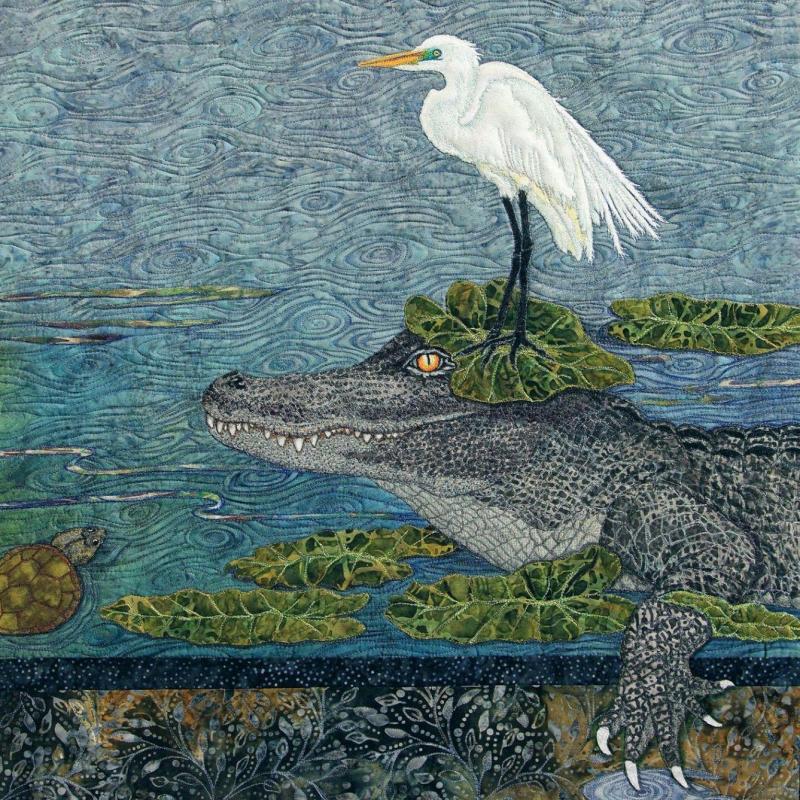An artist statement is a necessary part of sharing your work with others. A captivating narrative sells you and your work to jurors, gallery owners, and people who visit your website.
Artist statements typically fall into three categories. The first is a brief statement for a specific piece of work, only a few sentences in length. The second is a short statement consisting of two to three paragraphs that introduces your body of work at a gallery, museum, or exhibit. The third is a longer statement that describes who you are, what you do, and how you do it. This long-form version is useful for your website or to send along with a portfolio of work to a gallery owner, publisher, or museum curator. Keep this statement to no more than five paragraphs.
It is important to use the correct statement for each situation. There is no “one size fits all” version, especially if you need to submit work to a themed exhibition.
Writing a brief artist statement for a juror to read while looking at an image of your work lets you explain why your piece fits and enhances the theme. Make sure your words fill in the blanks and cause the juror to linger over your image, enjoying the nuances of your work.
A few examples of artist statements for an exhibition submission follow:
Poison dart frogs sport vibrant colors in order to alert their predators to danger. They are tiny, no bigger than a pinky fingernail. None are hot pink, except in my imaginings.
—Gwyned Trefethen
Despite its connotation as a luxury item, we seldom consider how silver is obtained through the arduous, dangerous work of mining, particularly back in 1907.
—Mary Pal
Wine glasses are transparent objects that glow with rich color when wine is poured. But fill them with light, and magical, unpredictable images appear.
—Sandra Sider
Whether you consider yourself a professional artist or a hobbyist, you need to engage those viewing your work. Your art took considerable time from generation of ideas to completion, and it was created to tell a story. Your artist statement speaks for you when you are not present to answer questions or introduce a piece of art.
Here are some tips for writing an artist statement:
- Write more information than you think you can use. Come back later and highlight the most important parts. Simplify and streamline your text until it presents a short, compelling look at your work.
- Use first person to welcome others into your world and help them feel comfortable. Write why you make art, what inspires you, what your art means to you, why you chose a specific medium to work in, and how your work is different from others.
- Catch the viewer’s attention in the first few lines; people tend to have short attention spans.
- Answer questions you think someone might ask as they view your work. Show connections between your ideas and the finished work. Materials and techniques should not be your focus.
- Write for a wide range of viewers. Make your statement sound like something you would say to another person. A sense of humor will take you a long way.
Sue Bleiweiss wrote this example of an artist statement:
“Working with my own hand-dyed fabrics, my goal is to create vibrant, colorful, and whimsical fiber art collages that delight the eye of the viewer and draw them in for a closer look.
Each piece I create begins in the pages of my sketchbook where I make several rough sketches of the imagery that I want to work with. Beginning with a small sketch gives me the freedom to explore combinations of the images and colors before cutting into any fabrics. My small sketches are enlarged into full-size cartoons that allow me to adjust the scale of the images and then the actual construction of the piece in fabric begins.
I work with professional fiber dyes using a process that uses a minimal amount of water to add color to the cloth I use in my fiber art collages. Dyeing my own fabric allows me to maintain a consistent color palette and I really enjoy that full circle feeling of starting with plain white cloth and using it to create something that vibrates with color and makes you smile when you look at it.”
You can begin to work on an artist statement by practicing writing exhibit submissions for select pieces. Ask your friends, including non-artist friends, to read your drafts and give you feedback. If they can’t follow your story, re-write the statement until it is clear. It’s important that your unique voice is heard. Be confident about revealing yourself, as this is the purpose of an artist’s statement.
Look through exhibition catalogs. If you were a juror, would the statements in those publications create a positive outlook and allow you to see how the work fits the theme? Read your statement out loud. Can you imagine saying it to a person you don’t know? Find a good proofreader, because spelling and grammar do matter.
Once you’re satisfied with your artist statement, consider writing another one in third person. There are still some galleries, museums, or exhibit opportunities in which a third-person statement may be requested.
Even if you don’t consider yourself a confident writer, this is too important a task to leave undone. There are many resources to guide you, including books on writing, online blogs, and websites. A writer can be hired to create a starting point for you.
The time you spend creating artist statements is invaluable. Each time you write or repeat this information, you become more comfortable in talking about and explaining what you create and why you devote your time and talent to the work.
Sarah Entsminger is a SAQA JAM residing in Ashburn, Virginia. She is a member of the organization’s Exhibition Committee.




